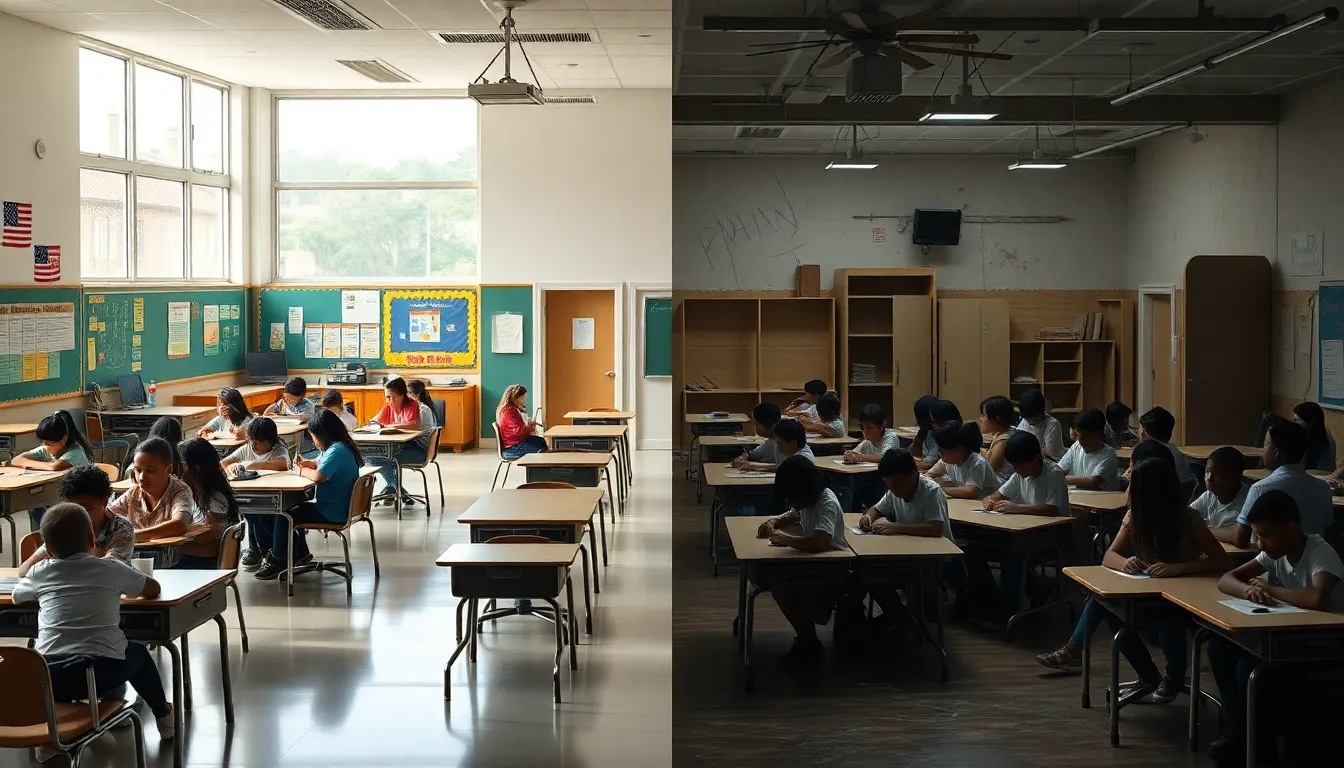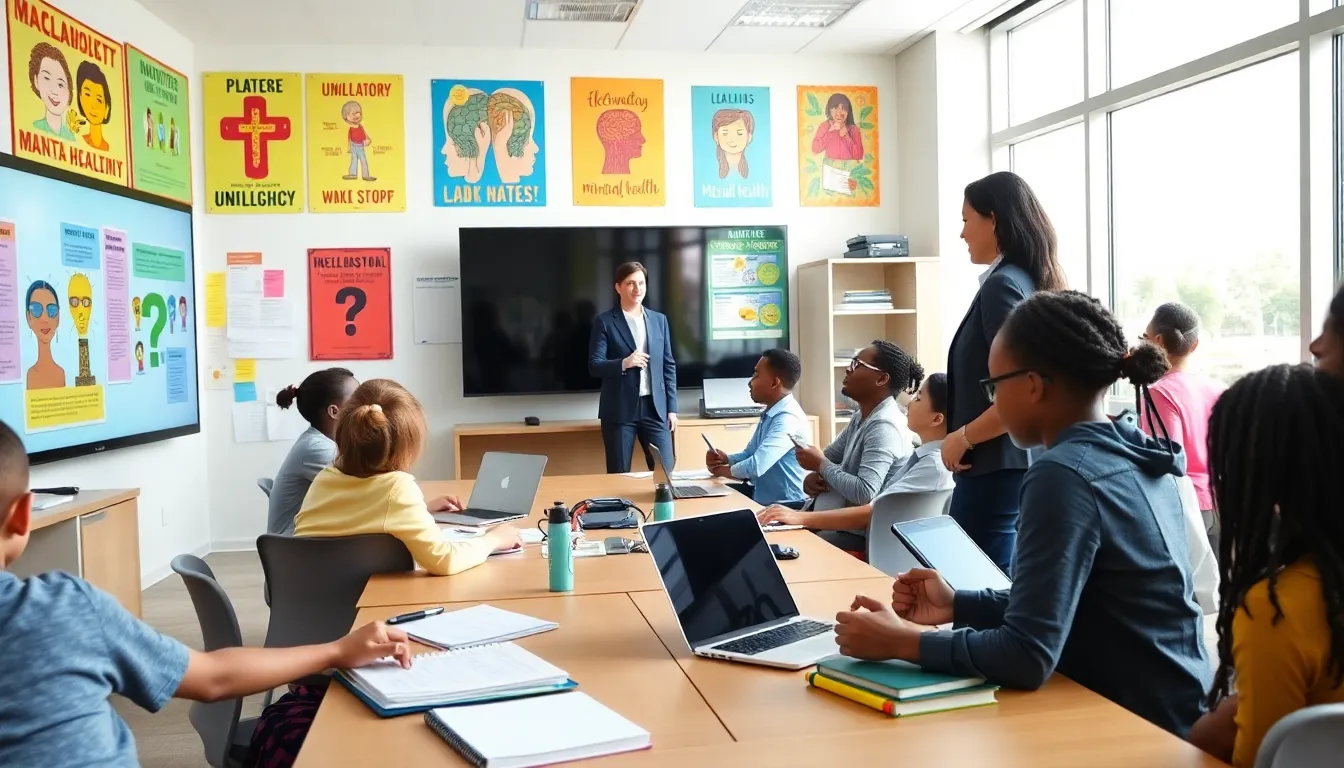Education: the good, the bad, and the confusing. It’s that sacred place where young minds are supposed to flourish, but let’s face it – many current systems are facing major issues. From funding to technology accessibility, the challenges seem to multiply faster than assignments assignments. Luckily, this article dives deep into the most pressing concerns in education today, sprinkled with a touch of humor, because who doesn’t need a laugh while navigating serious topics? Let’s unravel these issues together.
Table of Contents
ToggleFunding Inequities in Education

Education funding can feel as uneven as a three-legged race. In many areas, public schools depend heavily on local property taxes. This creates a massive disparity between schools in wealthy neighborhoods and those in underfunded areas. While one school might boast state-of-the-art facilities, a few miles away, students may be crammed into outdated classrooms with broken desks.
It’s a real-life game of Monopoly where some players start with all the property while others are left fighting over the scraps. The lack of equitable funding hinders not just resources, but also the quality of education. Schools struggling for funds can’t afford new textbooks, extracurricular activities, or even basic supplies. It’s time to ask ourselves: should education inequality really be the norm?
The funding model often leaves marginalized communities at a significant disadvantage, reinforcing cycles of poverty. When students don’t have access to quality education, they miss out on opportunities that could break those cycles. It’s a frustrating situation, calling for a critical rethinking of how education is funded across the board.
Impact of Standardized Testing
Standardized testing was designed to measure student performance, but it often feels more like a high-stakes guessing game. Many educators and parents argue that these tests fail to capture a student’s true potential. Picture this: a student who excels in creative thinking is forced to perform on a multiple-choice test focusing solely on rote memorization. Frustrating, right?
Also, the pressure to perform doesn’t just fall on the students. Teachers feel the heat too. They might teach to the test rather than focusing on a well-rounded education. As a result, critical thinking skills and creativity sometimes take a backseat. It raises a significant question: if the metrics of success are narrowly defined, can we truly gauge educational effectiveness?
Increasingly, educators advocate for assessments that reflect holistic learning rather than just standardized scores. Innovative assessments that incorporate project-based learning could pave the way for a more accurate reflection of student learning.
Access to Technology and Resources
In an era where technology governs everyday life, one would assume access to technological resources in education should be a given. Unfortunately, that’s far from the truth. Many schools lack basic technology, leaving students stranded in a time warp that feels like the dark ages. Imagine showing up to a digital citizenship lecture while still using dial-up Internet. It’s not ideal.
The truth is that students without access to the latest technology or even functioning computers are at a critical disadvantage. Online learning has become a vital part of education, but for many, it remains an inaccessible luxury. The digital divide significantly hinders students from underserved communities, making it crucial for governments and educational institutions to push for increased access to technology.
Not only should schools invest in hardware, but they also need to ensure students can navigate digital landscapes confidently. Teaching digital literacy will be just as essential as traditional subject matter in the future.
Teacher Recruitment and Retention Challenges
Imagine being a teacher in today’s world: overwhelming responsibilities, rigorous standards, and let’s not forget – the pay. Teacher recruitment and retention are in crisis. Many professionals find themselves leaving the field for less stressful and better-paying jobs. It’s a conundrum that leaves schools scrambling to fill positions, often relying on temporary or emergency hires.
The reasons for this exodus are manifold. Long hours, limited resources, and the emotional toll of managing classrooms can drain anyone’s passion. When teachers feel overworked and undervalued, they’re more inclined to seek professions where their skills are recognized and rewarded. This cycle creates a shortage of experienced educators who can provide the support students so desperately need.
To address this issue, it’s vital to rethink how teachers are supported in their roles. Competitive salaries, adequate training, and wellness programs could go a long way in ensuring teachers remain in the profession instead of feeling they need to run for the hills.
Mental Health Awareness in Schools
Mental health has become a significant topic in recent years, and schools are no exception. The pressures of academia, social dynamics, and a pressure cooker of expectations can affect students’ mental well-being. Yet, schools often lack adequate resources to support mental health initiatives, leaving educators to fill in the gaps without training or expertise.
Imagine a bustling high school where everyone seems fine on the outside, yet inside, a different story unfolds. Students grapple with anxiety, depression, and stress, but many feel they can’t speak up. Acknowledging and addressing mental health in educational settings is vital for creating a supportive environment where students can thrive academically and emotionally.
School systems need to integrate mental health resources, such as counselors trained to help students navigate challenges. Equipping schools with the tools to foster open conversations about mental health can lead to healthier mindsets among students.
Curriculum Relevance and Inclusivity
As society evolves, so too should the school curriculum. But, many educational programs still stick to outdated content that fails to engage today’s learners. Critical discussions around inclusivity highlight the importance of representing diverse voices and perspectives in educational materials.
When students see themselves reflected in their learning, they’re more likely to engage. Outdated textbooks that neglect significant cultural contributions or historical events detract from meaningful education. Schools must actively incorporate diverse viewpoints within their curricula, ensuring all students feel seen and heard.
This shift requires collaboration among educators, policymakers, and community leaders. By listening to different experiences and needs, educational institutions can create materials that resonate with diverse student bodies.
The Role of Parental Involvement
Parents play a crucial role in the educational landscape, but their involvement varies widely from family to family. Some parents remain actively engaged, while others struggle due to work, language barriers, or a lack of understanding of the educational system. Increased communication between schools and families can bridge this gap.
When parents feel informed and included, students often benefit from an enhanced learning environment. Encouraging parental involvement can take many forms: from regular check-ins on academic progress to hosting community events that welcome families into the fold. Schools need to find creative ways to foster and encourage this involvement, making it easy for parents to contribute to their child’s education.
When a partnership exists between schools and families, students tend to be more motivated and involved in their education.





